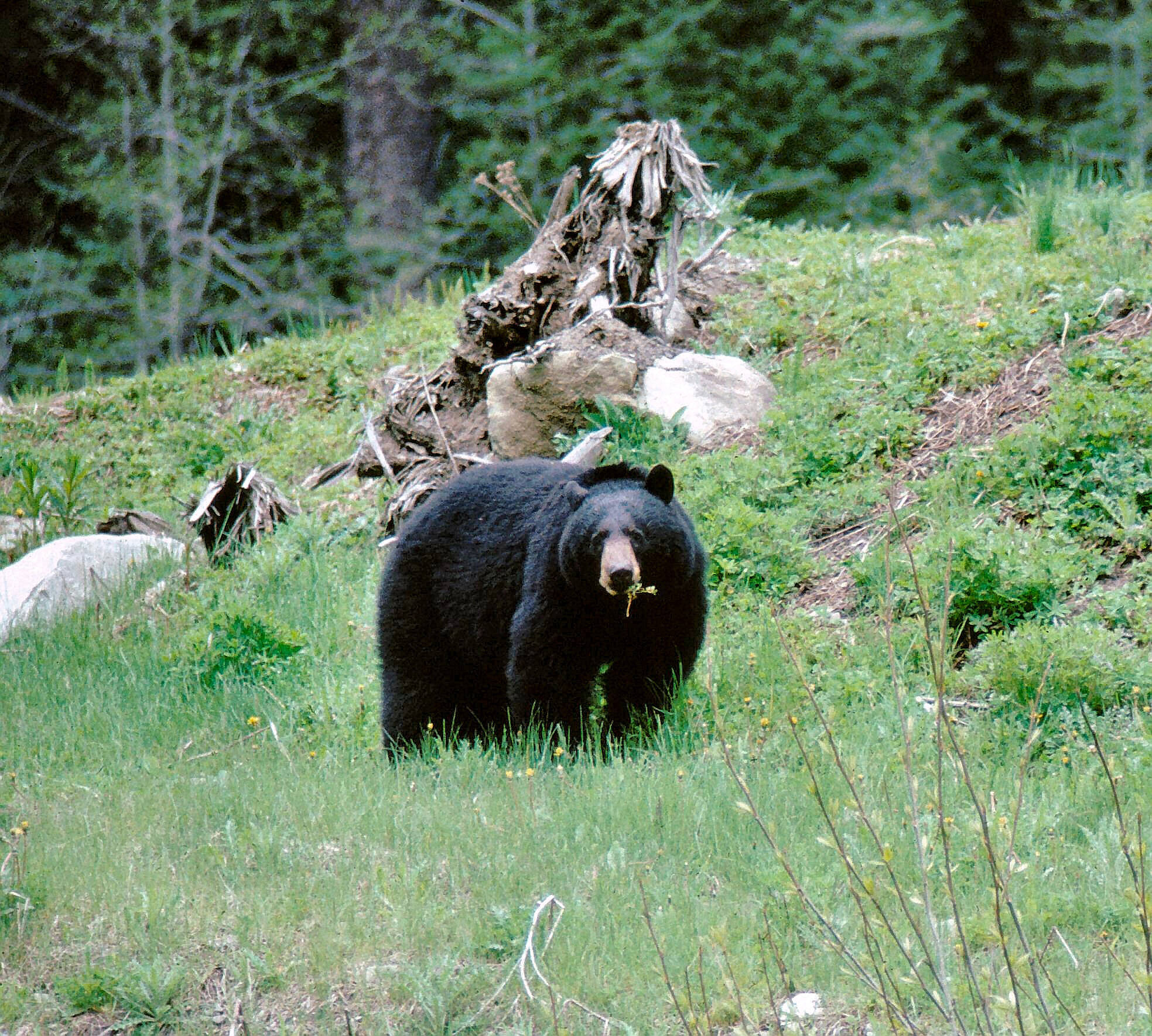Bears and bees have an ecological link relevant to Grays Harbor that goes deeper than the furry beasts’ simple addiction to liquid honey popularized by the Winnie the Pooh cartoon.
And two-week-old pizza leftovers are also sometimes part of that link.
It’s also the reason Scott Harris, a biologist with the Washington Department of Fish and Wildlife, synched a ratchet strap over his trash can extra tightly this fall at his home in Grayland.
Prolonged conditions of cold, wet weather this spring delayed pollinators, like bees, in their work of helping fruits flower, meaning this year’s wild berry crop — a main food source for black bears — wasn’t as productive as usual, according to Harris.
He said in some places, the rain beat the flower pedals to pieces. But that doesn’t make bears any less hungry, especially in the fall as they pack on calories for the winter. It only makes them more likely to find an easy meal in a trash can.
Harris, who specializes in wildlife conflict, said he has already seen above average bear reports in Western Washington this year, and the poor berry crop is to blame.
“Across the state this year we’ve had a tough time dealing with bears,” Harris said.
In an average year, Harris said he relocates one or two trash-mongering bears hanging around neighborhoods to their wildland habitats. This year, he’s already moved five.
During late summer and fall, bears enter a state of hyperphagia, or mass consumption, to hold them over for hibernation — an adaptation that allows bears to survive during winter months when food is sparse. To maintain their weight, bears will eat 1,000 to 2,000 calories a day, similar to humans, Harris said. But when in hyperphagia, they might devour 10,000 to 20,000 calories, depending on the size of the bear.
Usually, many of those calories come from local wild berries: Cascara berries, evergreen huckleberries, blueberries, red huckleberries and pacific crab apples. Evidence of hyperphagia sometimes appears in the form of excrement on the ground in apple pastures, Harris said.
“You’ll come across a pile of apples that looks like somebody just took an apple pie and dumped it on the ground,” Harris said. “That’s just because they’re eating so much to the point they can’t digest it all.”
Harris said frequent bear reports are also typical during spring, when the beasts emerge from hibernation, slow down during summer and pick back up in the fall. That’s where 2022 is anomalous — the reports “never really slowed down” throughout the summer.
And he expects that trend to continue.
“I can’t honestly say I’ve had a report of a bear in, say, downtown Aberdeen, but it really wouldn’t surprise me this year if one wandered through,” Harris said.
Creatures of habit
One common misconception about Harbor bears, Harris said, is they don’t hibernate.
“They do hibernate,” Harris said. “It’s a lack of food that triggers hibernation.”
Eating human food can be a tough habit to break for bears, and can even disrupt hibernation cycles. When natural food sources wane in November, human trash keeps piling up.
And bears don’t forget trash day. Based on location data from radio collars, Harris has found bears will break week-long — or even month-long — naps to seek out a smelly trash can.
“They know what day garbage day is,” Harris said. “They’ll get up on garbage day and go hit their favorite garbage can.”
If Harris identifies a bear hooked on leftovers, he sometimes has to relocate it to a more remote area of public land with hopes the critter will get back to berry picking. But Harris said a bear will only stay in the woods if it can find its fill of berries. That hasn’t been the case recently. He tracked a bear that moved 32 miles from the woods where he dropped it back to a residential area.
“Imagine going out and picking your daily caloric needs one or two berries at a time along with some leaves with your lips, or, popping open a garbage can and there’s three quarters of a pizza and half a container of cottage cheese,” Harris said.
But the encroachment goes both ways. Harris recalled an instance of a bear content with a crab apple patch near Ocean Shores until people built a business complex over the habitat.
“(The bear) switched to garbage,” Harris said.
Slim margins
Harris said people are more likely to have a bear encounter in areas where residential and wildlands meet, commonly called the wildland-urban interface. For most of the Harbor, the margin is slim.
“It’s just a treeline,” he said.
He used Aberdeen’s Central Park and Broadway Hill as prime examples, as well as the tidelands of North Bay near Ocean Shores.
Harris said his preferred means of solving wildlife conflict is education, not relocation.
“Don’t put your garbage out the night before, put it out the morning of,” Harris said. “And keep it secure.”
That includes pet food and bird feeders, too.
If you do see a bear, Harris said, “Use basic wildlife safety — don’t approach them, make noise, and usually a bear is going to run off.”
“Everybody calls up and thinks they are going to eat everybody. But I’ve dealt with more raccoon attacks and deer attacks than I have bear attacks,” he said.


